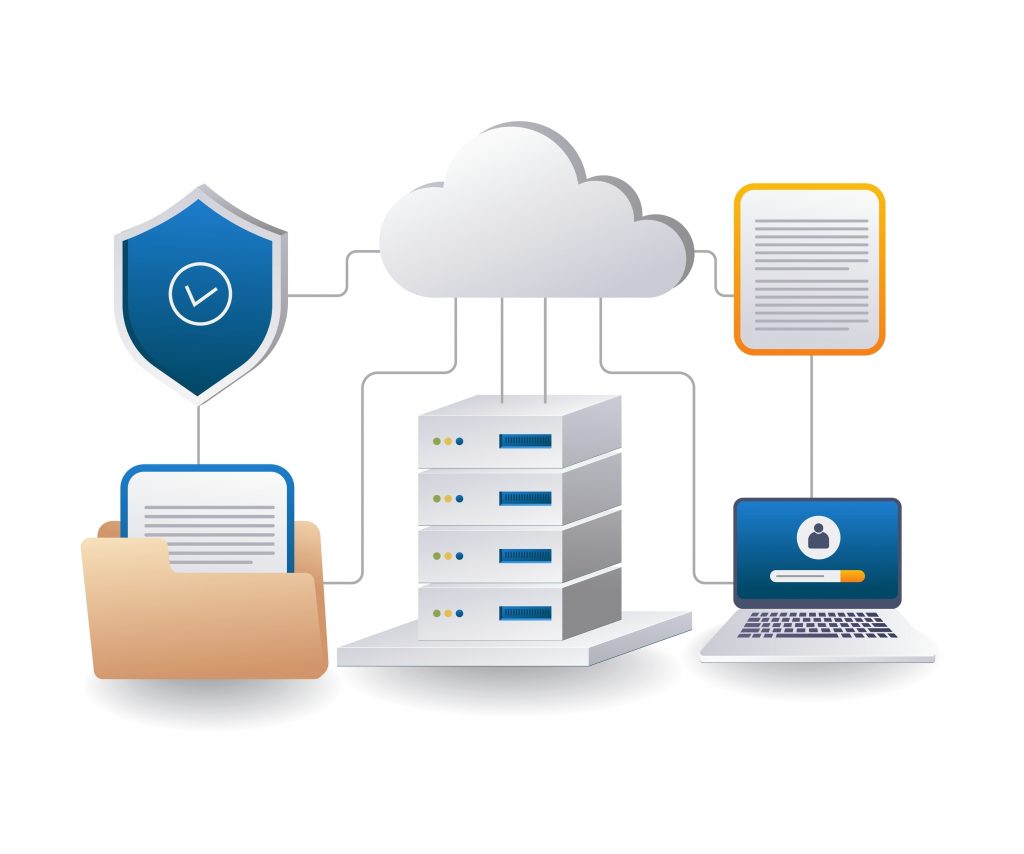Deciding between Azure cloud and on-premise infrastructure is no longer a simple IT choice, it’s a strategic business decision. The right infrastructure impacts not only performance and scalability but also compliance, costs, and innovation. Some organisations prefer the familiarity of on-site servers, while others embrace the flexibility of Azure. Then there are those who find the sweet spot in hybrid environments.
This article takes a closer look at the Azure vs on-premise infrastructure comparison, exploring benefits, drawbacks, and situations where each approach shines.

On-Premise Infrastructure: Tried and Trusted
The Reality of On-Premise IT
Step into a typical company’s data centre and you’ll see the physical backbone of traditional IT. Racks of servers are stacked high, cooling fans work continuously to keep temperatures stable, and IT teams remain on standby to ensure performance never falters. This is the essence of on-premise IT, a system where the business owns, operates, and safeguards its own infrastructure. Unlike cloud solutions, everything from the hardware to the security policies is handled internally, offering organisations complete autonomy.
Why Companies Still Value On-Premise Setups
For many industries, control is the single biggest advantage. Businesses have full authority over where their data resides, who can access it, and how it is protected. This is especially important in sectors like healthcare, government, or finance where compliance regulations are strict.
Another benefit lies in customisation. On-premise servers can be configured for niche workloads, ensuring that infrastructure meets very specific performance or compliance requirements. Additionally, local performance plays a key role, applications hosted on-site are not reliant on internet speed or connectivity, ensuring a consistent user experience.
The Hidden Challenges
However, the convenience of ownership comes at a cost. The initial purchase of servers is only the beginning. Businesses must also account for energy consumption, physical security measures, ongoing maintenance, and the salaries of highly skilled IT staff. Hardware refresh cycles every few years add further financial pressure, creating a total cost of ownership that can far exceed expectations.
Scaling Limitations
Flexibility is another weak point. Expanding infrastructure isn’t as simple as flipping a switch. To scale, organisations must buy and install new hardware, which involves delays, procurement challenges, and downtime. In a fast-paced digital economy, this lack of agility makes it difficult to adapt to market demands or sudden growth.
Azure Cloud: Agility on Demand
In contrast to traditional setups, Microsoft Azure delivers a completely different way of thinking about IT. Instead of investing heavily in physical servers, cooling systems, and storage, businesses can simply rent the resources they need, when they need them. Azure provides on-demand access to everything from virtual machines and databases to advanced AI-driven analytics, Internet of Things (IoT) solutions, and backup services. This flexibility frees organisations from the burden of ownership and places agility at the centre of their IT strategy.
Real-Time Elasticity
Consider the example of an e-commerce retailer during the holiday shopping season. Customer demand skyrockets, and traffic to the company’s website multiplies overnight. With an on-premise model, meeting this surge would require purchasing and configuring new servers well in advance, which might sit idle for most of the year. With Azure, however, resources scale automatically in real time, handling the spike seamlessly. Once demand returns to normal, the business scales back down, paying only for what it used. This elasticity is one of Azure’s strongest advantages.
Enterprise-Level Benefits
Azure also offers a host of enterprise-level benefits:
- Pay-as-you-go model reduces upfront capital costs, shifting IT expenditure from CapEx to OpEx.
- Integration with Microsoft’s wider ecosystem, such as Office 365, Dynamics, and Teams ensures smooth workflows.
- Disaster recovery and backup solutions enhance business continuity.
- AI and IoT services unlock innovation opportunities across industries.
- Global data centres improve performance and resilience.
Points to Consider
That said, Azure’s strengths do come with dependencies. Reliable internet connectivity is critical, and without strong governance, subscription costs can escalate. Still, for most enterprises, Azure represents an agile, scalable, and forward-looking alternative to traditional IT.

Azure vs On-Premise Infrastructure: Key Differences
Let’s move beyond theory and compare these models side by side. Instead of long paragraphs, here’s a quick comparison table for clarity:
| Factor | On-Premise Infrastructure | Azure Cloud |
| Cost | High CapEx upfront + ongoing maintenance | OpEx, pay-as-you-go with predictable scaling |
| Scalability | Limited, requires hardware purchases | Virtually unlimited, near-instant scaling |
| Security | Full control, but requires in-house expertise | Enterprise-grade, with shared responsibility model |
| Compliance | Easier to keep sensitive data in-house | Certifications across multiple industries and geographies |
| Disaster Recovery | Costly redundancy setups | Built-in backup, replication, and failover |
| Innovation | Restricted to available hardware | Cutting-edge AI, IoT, and analytics services |
When Cloud Migration Makes Sense
Cloud isn’t the answer for every scenario, but there are clear signs that a move to Azure is the right step:
- Fast Growth Companies – Start-ups scaling quickly can avoid costly infrastructure delays.
- Seasonal Demand – Businesses experiencing fluctuating workloads benefit from Azure’s flexibility.
- Remote Teams – Cloud-native apps empower hybrid or global workforces.
- Compliance-Friendly Expansion – Organisations entering new regions can leverage Azure’s global data centres.
- Innovation-Led Strategy – Companies embracing AI, data analytics, or IoT require the tools Azure provides.
Hybrid Environments: The Best of Both Worlds
What if you don’t want to fully abandon on-premise but also want cloud benefits? Enter hybrid environments. They allow businesses to keep critical data and workloads on-premise while pushing scalable, less-sensitive workloads into the cloud.
For example, a healthcare provider may store patient records on-premise for compliance but run analytics workloads on Azure. This approach delivers:
- Flexibility without sacrificing control.
- Reduced costs by shifting only select workloads.
- A gradual migration path instead of a sudden overhaul.
- The ability to innovate without breaching compliance.
Azure Arc strengthens this model, letting IT teams manage on-premise and cloud resources with a single pane of glass.
A Real-World Scenario
Consider a financial services firm: strict regulations prevent it from storing sensitive data outside its jurisdiction, but its customer apps need to scale fast. A pure on-premise setup would restrict agility, while a fully cloud-based system might raise compliance concerns.
The solution? Hybrid IT. By running customer applications on Azure while retaining core databases on-premise, the firm achieved compliance and innovation simultaneously. They cut costs on hardware, improved customer experience, and paved the way for a phased migration strategy.
Factors to Consider Before Deciding
Choosing between Azure and on-premise isn’t about picking a winner. It’s about aligning IT infrastructure with business priorities. Here are five essential questions:
- What does your budget look like CapEx vs OpEx?
- Are compliance requirements strict or flexible?
- Do you expect sudden spikes in demand?
- Can your IT team handle 24/7 maintenance and patching?
- How important is innovation for your future growth?
Your answers will shape whether a move to the cloud, staying on-premise, or adopting hybrid IT makes the most sense.
Looking Ahead: Future Trends
The landscape is evolving. Many businesses are already exploring:
- Multi-cloud strategies – Using Azure alongside AWS or Google Cloud.
- Edge computing – Bringing cloud closer to devices for faster response.
- AI integration – Leveraging Azure’s AI services for predictive insights.
- Green IT initiatives – Using cloud providers’ sustainable data centres to meet ESG goals.
While on-premise will remain relevant in niche sectors, the momentum is shifting toward cloud-first strategies with hybrid models bridging the gap.
Conclusion
There’s no universal winner in the Azure vs on-premise infrastructure comparison. On-premise appeals to organisations needing tight control, while Azure empowers businesses with scalability, innovation, and global reach. The best option often lies in hybrid environments, balancing compliance with flexibility.
At Cyberdan, we specialise in guiding businesses through this decision whether that means maintaining secure on-premise systems, managing cloud migration, or designing tailored hybrid solutions.Contact Cyberdan today to explore the best infrastructure path for your organisation.




